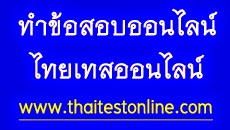| 1. 5.68 How heavy are benzene vapours? |
| 2. 5.01 What should be the first source of information when preparing to sample a new product? |
| 3. 5.12 All samples which are transported between terminals and laboratories or other installations should be labelled in accordance with the globally harmonised system for classification and labelling of chemicals (GHS). |
| 4. 5.33 Shipping declaration forms are required whenever a hazardous material is transported on a public road or highway. |
| 5. 5.65 What is the permissible exposure limit for benzene (8 hour time weighted average)? |
| 6. 5.70 What are the effects of acute exposure (short term) to benzene? |
| 7. 5.90 The Short Term Exposure Limit (STEL) defines exposure to a substance over how long? |
| 8. 5.54 What is the normal oxygen content of the air? |
| 9. 5.76 Hydrogen sulfide is probably the most dangerous gas commonly encountered in the petroleum industry. |
| 10. 5.35 What is the correct source of information about the hazards of any product being inspected? |
| 11. 5.51 What does an explosimeter (explosion meter) measure? |
| 12. 5.86 What is the principal limitation of a filter or cartridge respirator? |
| 13. 5.07 When are inspectors permitted to operate valves on board vessels? |
| 14. 5.78 What is the maximum permissible 8 hour TWA (time weighted average) exposure level of hydrogen sulfide? |
| 15. 5.53 What does an oxygen meter measure? |
| 16. 5.28 Why is it important to wear gloves while sampling? |
| 17. 5.20 To find out if a material is hazardous, you must consult the SDS. |
| 18. 5.56 What is the current exposure limit for benzene (8 hour time weighted average)? |
| 19. 5.71 Who or what should you consult if you need to know detailed safety or exposure information about benzene? |
| 20. 5.02 Regardless of the product, and in accordance with IP475/ISO 3170, what is the absolute maximum level to which sample containers must be filled? |
| 21. 5.14 The GHS applies to: |
| 22. 5.49 If the atmosphere in a cargo tank is stated to be below the LEL what does this mean? |
| 23. 5.89 When working in an area where peronal monitors indicate the presence of hydrogen sulfide you must wear SCBA |
| 24. 5.44 Before entering a confined space, which tests are required? |
| 25. 5.60 What is the minimum required respirator for working in a benzene environment that is greater than the permitted exposure limit? |
| 26. 5.04 What is the minimum personal protective equipment required when sampling? |
| 27. 5.81 What is the maximum permissible 8 hour TWA (time weighted average) exposure level of H2S? |
| 28. 5.61 When working with benzene, in addition to a respirator, hard hat and safety footwear, what other personal protective equipment should be worn? |
| 29. 5.45 According to the International Safety Guide for Oil Tankers and Terminals (ISGOTT), for a tank to be safe for entry, what should the reading on a combustible gas detector be? |
| 30. 5.55 Which of the following conditions can cause false readings on an explosion meter? |
| 31. 5.34 What must you do in order to transport flammable liquid samples on a public highway? |
| 32. 5.25 How can the opportunity for a build-up and/or discharge of static electricity be reduced? |
| 33. 5.83 Why is the sense of smell not reliable for detecting hydrogen sulfide? |
| 34. 5.18 A hard hat s most important feature, when worn, is the distance between the shell and the wearer s head. |
| 35. 5.46 Which of the following are examples of a confined space? |
| 36. 5.63 Can gasoline contain benzene? |
| 37. 5.50 What do the initials UEL stand for? |
| 38. 5.27 What can help prevent a build-up and/or discharge of static electricity when sampling? |
| 39. 5.72 What is the most hazardous component of many crude oils? |
| 40. 5.57 Benzene is a health hazard. Which of the following are likely to contain benzene? |
| 41. 5.06 When lifting anything heavy, which muscles should take most of the weight? |
| 42. 5.09 What should be the first reaction to any injury accident? |
| 43. 5.52 An explosimeter (explosion meter) measuring LEL% is utilized to sample the atmosphere within a cargo tank and a reading of 15% is observed. What does the reading mean? |
| 44. 5.66 What is the appearance and characteristic odour of benzene? |
| 45. 5.11 Portable electronic measurement equipment must be _______ immediately before gauging? |
| 46. 5.23 While sampling a crude ship, the fire alarm sounds. What action should be taken? |
| 47. 5.74 When working in an environment suspected of containing H2S, personal monitors must show a level below (or provide an alarm at) what limit? |
| 48. 5.62 Which of the following statements are correct, when working with benzene? |
| 49. 5.03 Regardless of the product, and in accordance with API Ch 8.1/ASTM D4057, what is the maximum level to which sample containers should normally be filled? |
| 50. 5.10 The responsibility for an inspector complying with the safety regulations in any terminal belongs to? |
ให้ตรวจสอบชื่อนามสกุลว่ากรอกครบหรือไหม่
พร้อมกับตรวจข้อสอบว่าเลือกทำครบทุกข้อหรือไม่ ไม่ครบไม่ตรวจนะครับ
|
|
|
|
